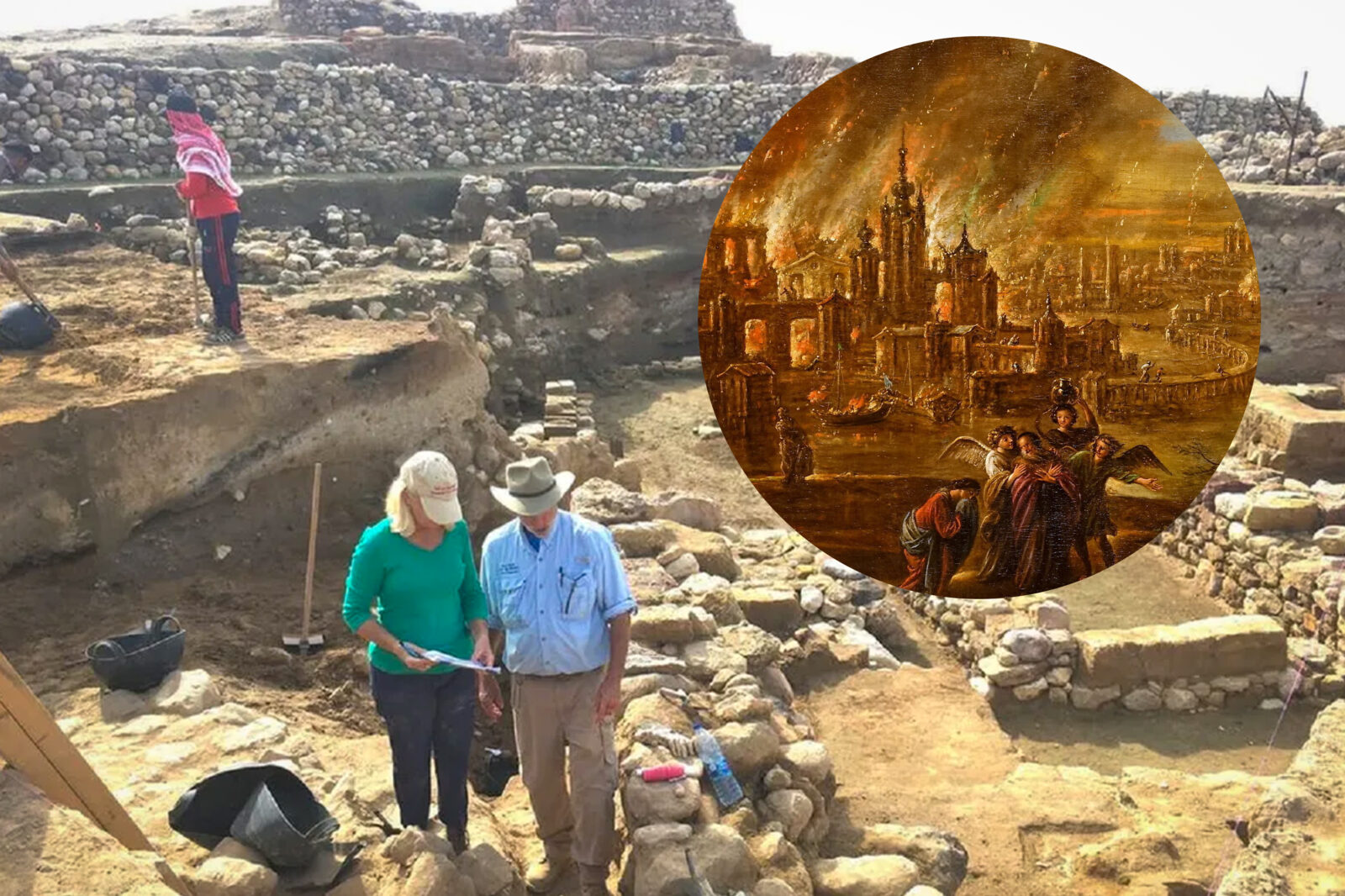
Theologians and archaeologists are teaming up to shed some light on what happened to the ancient biblical city of Sodom.
Dr. John Bergsma, a professor of theology at Ohio’s Franciscan University, found compelling evidence linking the ruins of Tall el-Hammam in the southern Jordan Valley to the biblical narrative of Sodom’s destruction. The findings offer a glimpse into a catastrophic event that may have been caused by an asteroid impact.
Tall el-Hammam, a once-thriving city, existed around 3,600 years ago and was more significant in size and power than Jerusalem or Jericho. However, its sudden disappearance has puzzled archaeologists for years. Notably, there is a distinct absence of signs of military siege or conflict in the ruins, suggesting a different, cataclysmic cause.
One of the key revelations that piqued Bergsma’s interest was the discovery of extreme heating on skeletal remains and pottery fragments at the site. This heat damage could potentially be attributed to an asteroid impact, similar to what is described in Genesis 19 when God “rained down burning sulfur” on Sodom and Gomorrah, completely annihilating them.
Bergsma explained that pieces of pottery found at Tall el-Hammam were covered in a substance known as Trinitite, which is “that glass layer that you get when you set off an atomic bomb in the desert and it melts the sand.” The presence of Trinitite adds weight to the theory that a high-energy event, like an asteroid impact, occurred in the area.
Bergsma also explained the shocking discovery of human remains at the site.
“Human skeletons are complete up until about halfway up the backbone, and then there’s just a scorch mark, and there’s nothing on the top of the body,” Bergsma said. “They found massive evidence that a huge heat blast from the sky at about 25C above the horizon incinerated these twin cities on the Jordanian side of the river.”
Steven Collins, the principal archaeologist at Tall el-Hammam, likened the devastation to the Tunguska Event of 1908, a massive asteroid explosion over Siberia that caused widespread destruction. Collins proposed that the airburst at Tall el-Hammam might have been even larger, with energy levels exceeding that of the Hiroshima atomic bomb.
The event also appears to have generated significant amounts of salt, much like the biblical account of Lot’s wife being turned into a pillar of salt after the destruction of Sodom.
“The salt was thrown up due to the high impact pressures,” James Kennett, an emeritus professor of earth science at the University of California, explained. “And it may be that the impact partially hit the Dead Sea, which is rich in salt.”
While some skeptics have accused Collins and Kennett of jumping to conclusions, Bergsma is convinced.
“It really changed my perspective on the Old Testament map because what it pointed out to me is things that sounded too outlandish to be history…is actually shown to be a historical event,” he said.























